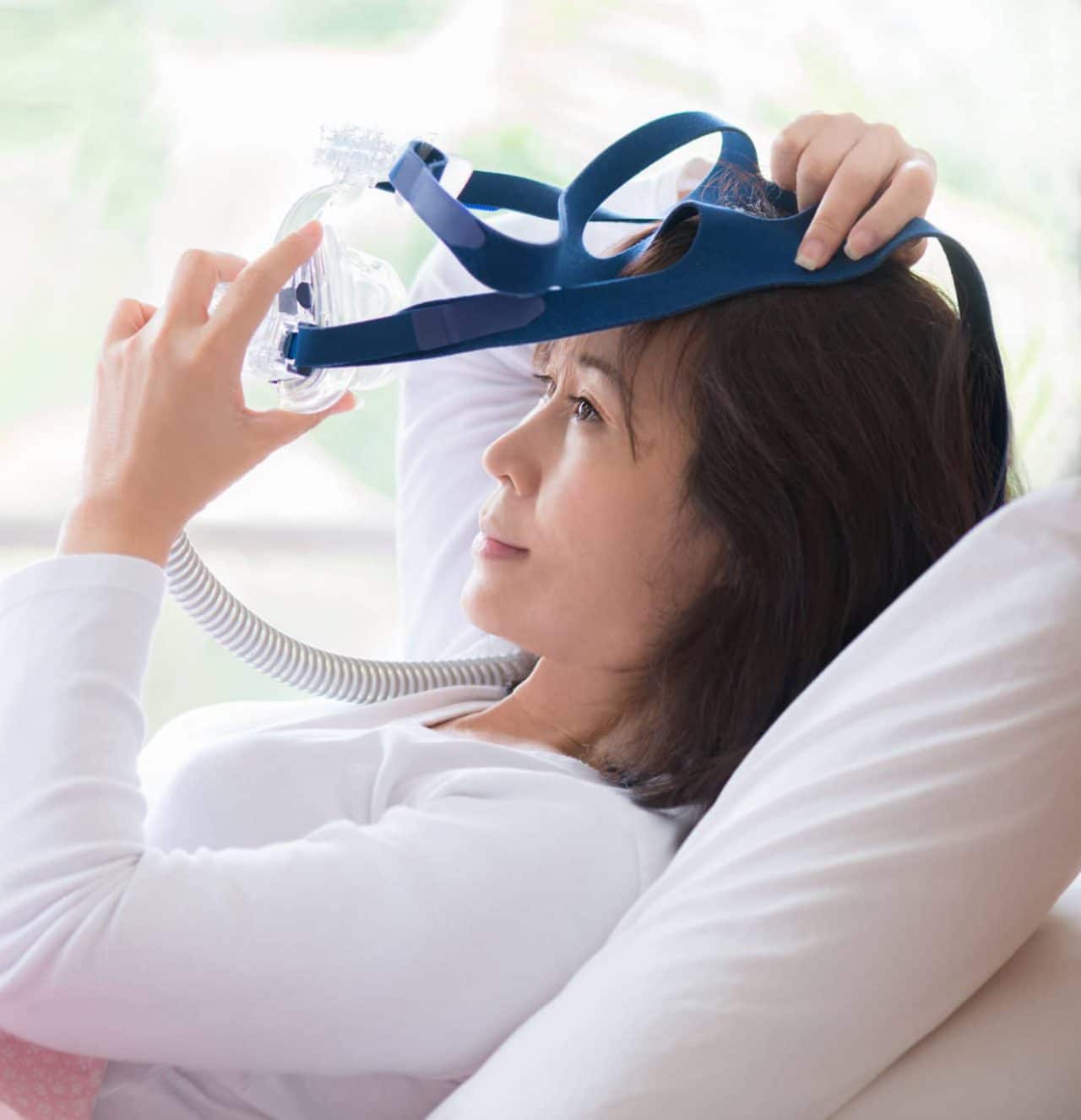
Approximately 18 million Americans experience obstructive sleep apnea (OSA), a sleep disorder that can cause serious problems such as excessive daytime sleepiness and fatigue, memory loss and lack of concentration. These individuals have an increased risk of heart disease, stroke and high blood pressure.
Continuous Positive Airway Pressure (CPAP)
The most popular type of treatment for obstructive sleep apnea is the CPAP (continuous positive airway pressure) device. This machine utilizes a face or nasal mask connected to a pump, which provides a positive flow of air powerful enough to keep your airway passage open. The device must be worn every night to be effective.
While some find it inconvenient and uncomfortable, the results are typically instantaneous and worth the discomfort. Both machines and masks are available in a variety of styles and sizes, which can be geared toward your individual needs. Some people benefit from a nasal mask that covers the nose, while others require a full-face mask that covers both the nose and mouth.
Nasal pillows, consisting of soft silicone tubes that are placed directly in the nostrils, are another popular option. An optional humidifier can help prevent nasal irritation and drainage by providing a steady flow of heated and moisturized air.
A number of alternative PAP devices are available. Autofiltrating positive airway pressure (APAP) automatically increases or decreases air pressure throughout the night as needed. Bi-level positive airway pressure (BPAP) devices increase the pressure level when the people breathes in, and decrease it when they breathe out. These machines often help individuals who have trouble with the basic CPAP device.
Oral Appliances
While continuous positive airway pressure (CPAP) therapy is the preferred method of treatment, not everybody is able to tolerate sleeping with a mask attached to a machine that delivers bursts of air to the throat. Oral appliances are an alternative for these patients. They work by either moving the lower jaw forward to keep the airway passages open or holding the tongue in place to prevent it from falling backward and blocking the airway.
Oral appliances may be either fixed or adjustable and are available in many different styles with as many as 40 different patents in existence. Some are custom designed to fit the individual’s mouth after impressions are made and must be prescribed by a dentist, oral surgeon or ENT physician with sleep medicine experience. Others are considered one-size-fits-all.
There are several advantages to using oral appliances over other sleep apnea treatment methods. They are easy to use, inexpensive and effective for treating a number of sleep disorders including snoring, upper airway resistance syndrome and obstructive sleep apnea. They are easy to insert and remove and tend to have higher compliance rates than CPAP. Younger patients who have to moderate sleep apnea, lower BMI and smaller neck sizes are most likely to see positive results from oral appliances.
Inspire
Inspire is an implantable device, similar to a pacemaker, that monitors your breathing patterns while you sleep. It delivers mild stimulation to the nerve that controls movement of the tongue and airway muscles, keeping the airway open and preventing OSA. The device contains three parts: a small generator, a breathing sensor lead and a stimulation lead. Patients use a small handheld remote to control the device, turning it on or off and pausing it during the night if needed. The stimulation is typically painless, and its strength can always be adjusted using the remote if needed.
The Inspire device is implanted during an outpatient surgical procedure using general anesthesia. It is placed beneath the skin of the neck and chest via three small incisions. Most patients recover fully from surgery within a couple of weeks.
A recent three-year study concluded that many patients noted significant improvements in their quality of life and daytime functioning abilities. Seventy-eight percent of patients experienced a reduction in OSA, and 80 percent reported soft or no snoring.
Candidates for Inspire must have been diagnosed with moderate to severe OSA and are unable to benefit from PAP therapy. They must not be significantly overweight.
Call San Diego ENT at (858) 926-7010 for more information or to schedule an appointment.
